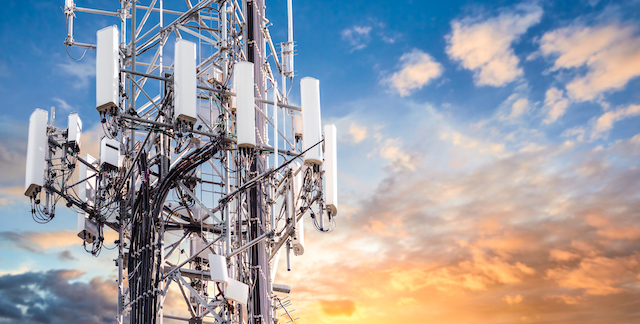Telecom
The Telecom Industry Is Proving Essential in the COVID-19 Response
April 15, 2020 | Written by: Craig Wilson
Share this post:

Telecom operators have never been more relevant than they are today, connecting families and communities while keeping businesses and educational institutions logged on.
During this unprecedented time, communication service providers (CSPs) have shown a resilience and willingness to act, giving us a glimpse into the new market reality. In this “new normal,” CSPs are leading the effort for remote working, online learning and social distancing.
Immediate Response: Answering the Call
Around the world, CSPs have responded with a sense of urgency, purpose and empathy. IBM is supporting our CSP clients in their efforts across several fronts:
- Supporting healthcare and government agencies by equipping field hospitals in the U.K. with high speed connectivity and devices, providing insight on population movement to tackle the spread of the virus in the U.S., Asia and the E.U., connecting citizens to vital information, and providing national healthcare institutions with the tools to work remotely and securely as they research treatments for COVID-19
- Extending network capacity by 30-50% to support secure remote working for businesses and to connect teachers and students via virtual classrooms
- Implementing remote and virtual agent strategies to deliver customer care amid escalating traffic to contact centers and digital channels
- Ensuring continued service to residential and small business customers unable to pay their current bills, waiving late fees and opening WiFi hotspots to anyone who needs them
Short-Term to Mid-Term: Reacting to Market Conditions
As our society and economies are connected and powered by communication networks, the telecom industry has been less impacted in the financial markets than many others. However, over the next few months the industry will need to respond to several common challenges, including:
- Significant pressure on operating expenses, with rapid cost take-out initiatives
- Prioritization of critical capital expenditure aligned to revenue and business continuity
- Supply chain optimization in the face of equipment and labor supply volatility
- Revenue and cash management amid an economic downturn
Longer-Term: Implications for the New Normal
As a new normal emerges, there are a few fundamental reactions that we can expect from the telecom industry:
- CSPs will likely accelerate their digital transformation, institutionalizing new ways of working for their employees. Consumers and businesses will demand a richer, more consistent omnichannel digital experience with an emphasis on digital self-service. We will see more use of artificial intelligence (AI) to augment call center agents and retail stores, providing for greater customer insight and real-time decisions.
- Facing continued pressure on operating expenses and business agility, we expect to see a renewed sense of urgency in shifting to hybrid cloud IT and network architectures and operations with extreme automation. This will propel deployment of open, seamless networks that deliver new levels of orchestration and agility. Changes to accommodate major shifts in workload, load balancing and more infusion of AI/machine learning (ML) into the network at the Core, Edge or vRAN will become key to investment strategies and sustained operational efficiency.
- We can expect to see more examples of traditional telcos re-inventing themselves as a platform business, operating as both Digital Services Providers and Digital Services Enablers. We are already seeing the impact of COVID-19 on planned 5G deployments—with China and the U.S. continuing, if not accelerating, the pace while several other countries have postponed spectrum auctions and rollouts. As businesses and governments establish their own new normal, 5G and Edge computing will be necessary to deliver the automation, performance and cognitive insight required by many industries—including manufacturing, healthcare, energy and utilities, among others. Telecom operators will need to embrace open ecosystems to externalize innovation and accelerate new services.
- Cybersecurity will be high on the agenda, as the post-COVID-19 era will bring an increased level of digital access to businesses and information around the globe. CSPs will experience an increase in remote working among their own employees, in addition to an expansion of Security as a Service offerings to support their business customers.
 Moving forward, whatever this new normal holds for the industry, we can expect change to impact all aspects of the telecom business. That will include the manner in which providers serve their customers and engage with partners; the work environment they create for their employees; the actions they execute to prioritize investments and streamline their operations; and the steps they take to extend the closer-knit relationships they are forming with local communities.
Moving forward, whatever this new normal holds for the industry, we can expect change to impact all aspects of the telecom business. That will include the manner in which providers serve their customers and engage with partners; the work environment they create for their employees; the actions they execute to prioritize investments and streamline their operations; and the steps they take to extend the closer-knit relationships they are forming with local communities.

Craig Wilson is IBM's vice president for the global telecom industry.
Shifts in U.S. Consumers’ Preferences Amid COVID-19 Make Business Agility Essential
As we move through the pandemic, and states and businesses in the United States begin to carefully re-open, U.S. consumers’ attitudes toward life and work are continuing to evolve, according to new research from the IBM Institute for Business Value (IBV). The IBV polled more than 18,000 U.S. adults in May and early June to […]
Igniting the Dynamic Workforce in Your Company
In the rapid push to moving to remote work, we’ve seen digital strategies accelerate by years – transforming their workplaces, workstyles, and business processes forever. Overnight, remote workforces put advanced environments of multi-device mobility, dynamic connection points and robust cloud-based apps that ease communication and collaboration. A new normal is emerging, led by the companies aggressively adopting cloud […]
Lessons from Space May Help Care for Those Living Through Social Isolation on Earth
Since the Crew Dragon spacecraft arrived at the International Space Station (ISS) on May 31, NASA astronauts Bob Behnken and Doug Hurley have been busy—according to their Twitter posts, even working over the weekend to repair the ISS treadmill. They likely don’t have much time to think about being lonely and cut off from life […]


